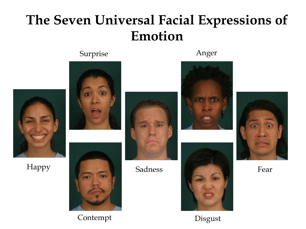 by Susan Crespo for Washington News Wire
by Susan Crespo for Washington News Wire
Ohio State University researchers have located the single area of the brain that seems to be responsible for helping us categorize and label the facial expressions of those around us. The team monitored brain activity of 10 college students as each were shown over 1,000 pictures of people making 7 different facial expressions: disgusted, happily surprised, happily disgusted, angrily surprised, fearfully surprised, sadly fearful and fearfully disgusted.
The area that lit up in the brain as students analyzed each photograph was the posterior superior temporal sulcus (pSTS) which is located behind the ear on the right side of the brain. Researchers also discovered nerve patterns inside the pSTS that appeared to be able to understand muscle movements in the face and relate them directly to certain emotions. Each pattern is used to detect a feeling, such as the knowledge that upward turned lips equals a smile.
The author of the study, Aleix Martinez recently said these results suggest that the brain uses a decoding system to understand facial expressions by using a mathematical equation of sorts to accumulate key muscle changes in the face. Martinez explains that humans use a vast number of facial expressions in order to convey a single emotion. We may not always be aware but we can instantly recognize non-verbal signals and communication. The brain is able to take an “encoded” emotion and “decode” it with amazing efficiency. This study helps researchers pinpoint the pSTS as the part of the brain that unconsciously helps us better understand those around us.
Julie Golomb, co-author of the study says this new found information will not only help us to better understand how the brain translates and processes expressions but give them something to compare to people with mental conditions, such as autism. The study was published in the Journal of Neuroscience for their April 19th issue.